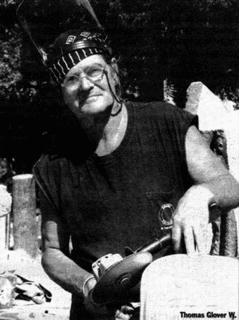Tuesday, July 13, 2004
A New St. Augustine Development Promises A Fresh Commitment to the Arts

Once a polluted site, the 14 acres of land on the San Sebastian River in downtown St. Augustine are slated to become a haven for public art. If all goes as planned, the St. Augustine Sculpture Garden -- after nearly a decade -- will finally become a reality.
The riverfront land, recently sold by the city of St. Augustine to San Sebastian Harbor Partners for $3.6 million, will soon be home to a mixed-use development, Sebastian Inland Harbor, which will include restaurants, residences and parking. It will also include space for an open-air collection of large-scale sculptures. Works, several of which are already complete, will focus on St. Augustine history, including the original Native American residents, the influence of the Spanish and the important of the city’s coastal location.
The Sculpture Garden will break with the city's old-world feel and tame the sensibilities of other public art displays. "Public art projects have already created controversy, no matter what you put [in them]," says St. Augustine sculpture Thomas Glover W., director oft eh non-profit St. Augustine Sculpture Garden, Inc. But the group of master sculptures and patrons, which will be responsible for creating and nurturing the Garden's collection, won't be cowed by controversy. Typically, Glover W. says, sculpture garden suffer from "the sterilization of art, because the committee overseeing public artwork installations are sensitive to public opinion, public controversy and public outcry. This sculpture garden is different, showing sophistication, imagination. Some are a little daring -- nothing we feel inappropriate -- and extremely well crafter. It breaks away from the safe route."
Though San Sebastian Harbor Partners has yet to break ground on the development, they pledge to follow through with the garden. “The sculptures aren't necessarily suitable next to a monument of say, Henry Flagler, because they're more modern," said Matthew Merritt, a partner with San Sebastian Harbor Partners. "But it's something everyone would like to see. This location is very well-suited to these sculptures."
Current development plans for the property, which runs from the river to King Street behind the San Sebastian Winery, include a hotel, condos, retail space, marina and parking garage. At the city's request, the developer is making public access a priority. Besides the sculpture garden, there will be an outdoor amphitheatre and a river-walk.
"This is the first time the city has ever had a contract for sale of the property," says Tim Burchfield, chief administrative officer with the city of St. Augustine. "We've never been this far before." That's partly because the site was once heavily contaminated. A former coal gasification plant was there between 1885 and the late 1950s, and the property was polluted with coal tar, a byproduct created when coal is burned into gas. A former owner of the site, Atlanta Gas Light Company, paid 90 percent of the cleanup cost, while the city picked up the rest of the tab.
"The residue, over time, saturated the ground, and that had to be removed," says Burchfield. "This is actually the first site, at least in Northeast Florida, that has been cleaned up, and the EPA is proud of how fast we got his cleaned up." According to a March 2002 U.S. Environmental Protection Agency report to the project, "The progression from a cleanup decision to construction completion in just a year and half is truly remarkable when compared to other Superfund cleanup efforts of this magnitude."
The garden will feature more than a dozen large-scale works, close to life-size or larger, with some reaching eight feet tall. Once placed on their bases, some artwork will tower 14 feet above visitors.
The works include the "All Nations Totem" crated by Harold Lock and Thomas Glover W., "Untitled" in sandstone by Enzo Torcoletti, "Call for World Peace" in soapstone by Patricia Barthel, "Flowering" in marble by Alvin Felch and "Españolas" in concrete and steel by Marianne Lerbs. The artists have donated their time to the project.
"These artists gave these works to the city of St. Augustine to be viewed by the public," says former mayor Len Weeks. “And having public access to the waterfront with the boardwalk is good for the citizens and tourists."
Designing the bases and installing the garden is expected to take up tot two years. It should be worth the wait.